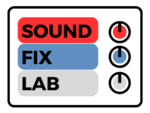Welcome to our music tutorial series on mastering music arrangement! In this guide, we will explore the core elements of music arrangement and provide you with valuable insights on how to effectively utilize rhythm, harmony, and lead instruments to create captivating compositions. Whether you’re a beginner or an experienced musician, this article will help you understand the key principles and questions to consider when arranging music.
Understanding the Core Elements
Music arrangement revolves around three fundamental elements: rhythm, harmony, and melody/lead. These elements form the backbone of a composition and dictate its structure and impact. Let’s delve into each of them:
Rhythm | The rhythmic element provides the foundation and groove of the music. It includes drums, percussion, basslines, and rhythmic instruments. Utilize rhythm to maintain a consistent beat and drive throughout the song.
Harmony | Harmony refers to the chords and accompanying instruments that support the melody. It adds depth and richness to the music. Use harmony to create chord progressions, layers, and support for the melody.
Melody/Lead | The melody or lead is the primary musical line that carries the main theme or hook. It is often played by a solo instrument or sung. Utilize the melody/lead to create a memorable and recognizable musical idea.
Genre-Specific Examples
Example 1: Pop/Rock Arrangement
– Drums: Providing the rhythmic foundation with a combination of kick, snare, and cymbals.
– Guitar: Playing rhythm chords for harmonic support.
– Lead vocals: Carrying the melody and serving as the primary focus.
Example 2: Acoustic Folk Arrangement
– Acoustic guitar: Providing rhythmic strumming patterns and chord progressions.
– Piano: Playing melodic arpeggios or harmonizing with the guitar.
– Lead vocals: Singing the main melody and delivering the lyrics.
Example 3: Electronic Dance Music (EDM) Arrangement
– Kick drum and bassline: Creating the powerful rhythmic foundation and driving the groove.
– Synth chords or pads: Playing harmonic progressions to support the melody.
– Lead synth or vocal samples: Delivering catchy melodies and hooks.
In these examples, the focus is on having three primary elements that play distinctive roles and contribute to the overall musical arrangement. While other instruments or layers may be present to add depth or texture, they should not overshadow or compete with the primary three elements at any given time.
Quick Note: When we talk about using these three elements in a mix at any given time, it does not necessarily mean limiting yourself to only three instruments. Instead, it refers to having a maximum of three prominent elements or layers within the arrangement that are actively contributing to the overall sound. These elements could involve one or more instruments or sound sources working together.
Remember, these examples are not strict rules but rather guidelines to help achieve clarity and balance in your mixes. Feel free to experiment and adapt these principles to suit your specific musical style and preferences.
Questions to Determine Instrument Roles
When deciding which instrument to assign as a rhythm, harmony, or lead element, consider the following questions:
– What is the primary role of this instrument in the arrangement?
– What purpose does this instrument serve in the overall musical structure?
– Does the instrument enhance or complement the other elements in the arrangement?
– Does the instrument bring a unique sonic texture or timbre to the arrangement?
– Does the instrument contribute to the intended genre or style of the music?
By answering these questions, you can make informed decisions about the role each instrument will play in your arrangement. It’s important to strike a balance and create a cohesive and well-rounded sound.
Additional Elements to Elevate Your Arrangement
While rhythm, harmony, and melody/lead are the core elements, there are additional elements that can enhance your arrangement:
– Counterpoint: Create multiple melodic lines that interact and complement each other, adding complexity and interest.
– Texture: Vary the overall sound and arrangement quality, such as thickening or thinning the instrumentation throughout the song.
– Dynamics: Utilize changes in volume and intensity to create tension, build-ups, and climaxes.
– Effects: Apply audio processing techniques like reverb, delay, modulation, and distortion to add depth, atmosphere, and uniqueness.
Trust Your Musical Intuition
While the questions and guidelines provided here are valuable, remember that arranging music is also an art form. Trust your musical intuition and experiment with different instrument combinations, roles, and arrangements. Allow yourself the freedom to explore and discover what works best for your composition.
Mastering music arrangement requires a deep understanding of rhythm, harmony, and melody/lead. By considering the roles of each instrument and asking critical questions, you can create well-balanced and captivating arrangements. Additionally, don’t be afraid to explore the additional elements of counterpoint, texture, dynamics, and effects to add depth and uniqueness to your music. Embrace your creativity, practice, and enjoy the journey of arranging beautiful and memorable compositions. Happy arranging!


